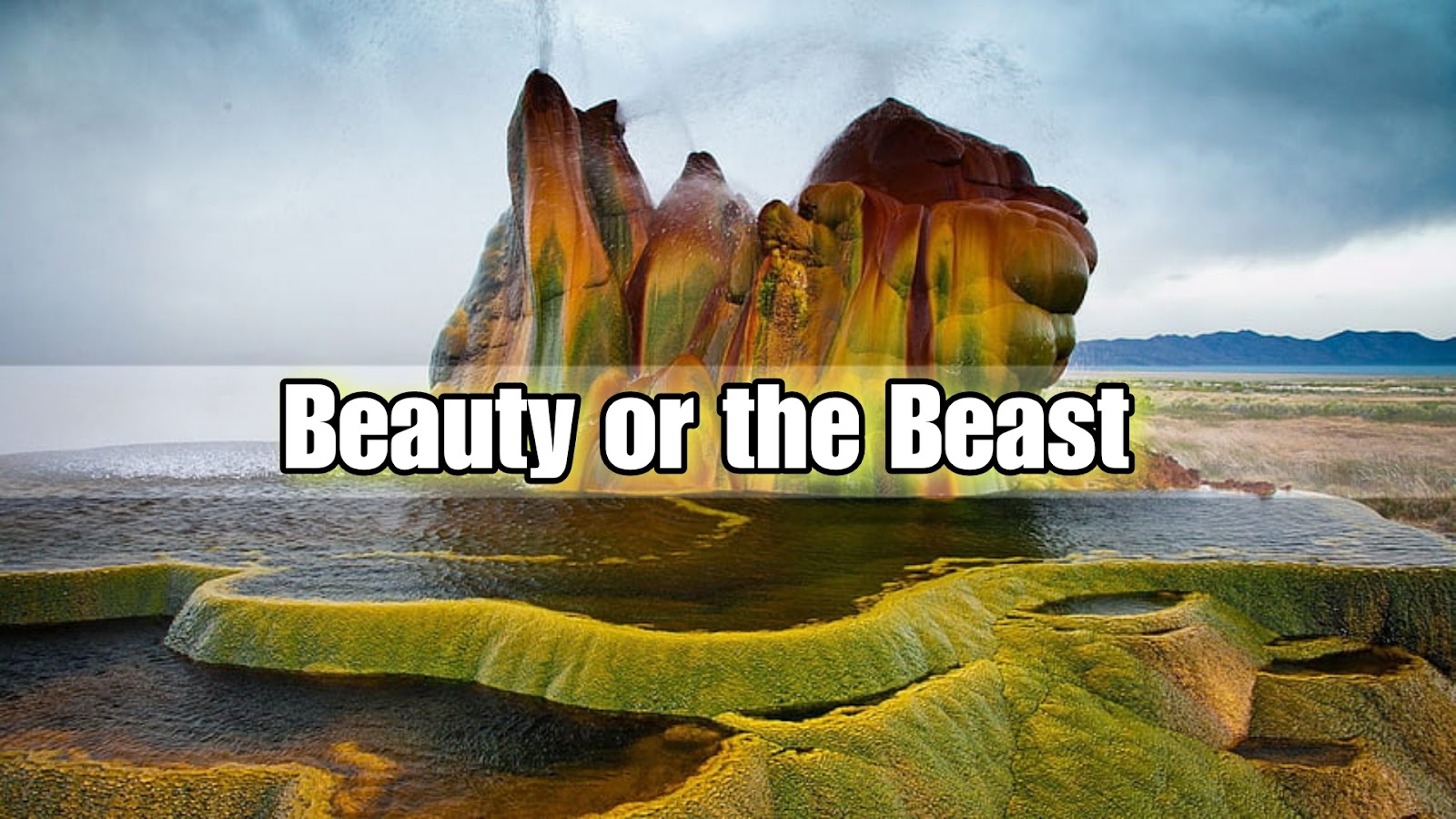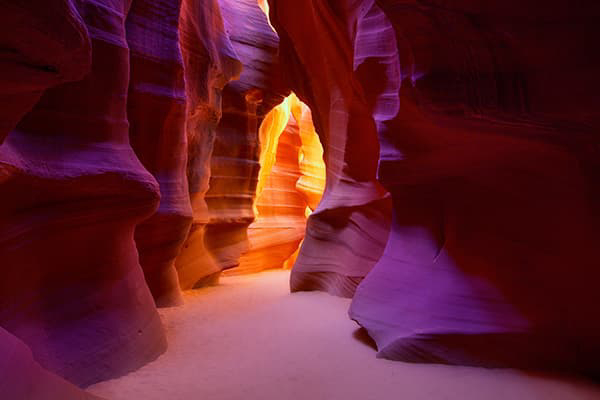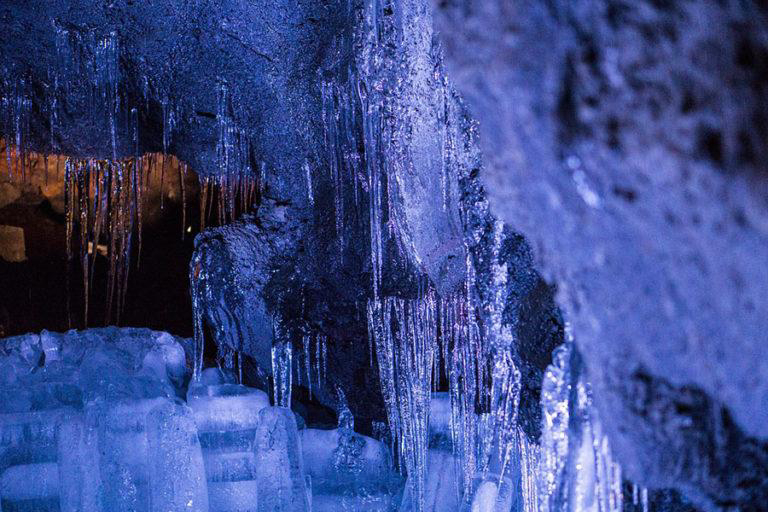Nature is enigmatic. Something seems beautiful you don't know what danger lies underneath. Here are some ravishing sight of the world with perils hidden behind.
Lake Abraham
Lake Abraham, also known as Abraham Lake, is a man-made reservoir located in Alberta, Canada. It's a famous tourist attractions because of it's unique feature.In the summer it resembles like any another glacier lacks in the region with it's turquoise blue water. But the real magic happens in the winter. Call this a "Christmas magic" but in the winter months frozen ice bubbles that form under the ice in the lake caused by methane gas trapped below the surface of the lake that is released from decaying plants and animals on the lake bed hence creating crystal like ice bubble columns giving stunning visual effects that attract photographers and nature lovers from around the world. The best place to see the ice bubbles is at Preachers Point.
However,Lake Abraham can be dangerous under certain conditions, primarily due to its unique features and the risks associated with its environment.
Thin Ice: During the winter, when Lake Abraham freezes, the ice can be deceptively thin in some areas, especially around the ice bubble formations.
Methane Gas: Methane is a greenhouse gas which is according to scientists is twenty times more potent than carbon dioxide when release in the atmosphere, which tend to worsen the effect of climate change.Also methane gas bubbles trapped in the ice can be dangerous if ignited. While it's unlikely to happen naturally, there have been instances where people have attempted to ignite the gas, risking fires or explosions.
Danakil dessert
The Danakil Desert, also known as the Danakil Depression, is a unique and extreme desert located in the northeastern part of Africa, primarily in the Afar Region of Ethiopia.
The desert is renowned for its otherworldly colourful landscapes which make them look out of this planet. colorful mineral deposits, sulfur springs, and salt flats. Particularly in the Danakil Depression region, colourful landscapes are formed due to geological and mineralogical factors.
Mineral Deposits: The Danakil Depression is rich in various minerals, including sulfur, potassium, and iron compounds. These minerals can create colorful deposits on the surface, ranging from vivid yellows and oranges to deep reds and even purples. For example, sulfur often appears yellow, iron can create red or rust-colored deposits, and potassium salts can exhibit various shades.
Geothermal Activity: The Danakil Depression is geologically active, with hot springs, geysers, and fumaroles emitting gases and minerals. These geothermal features can contribute to the formation of colorful mineral deposits in the surrounding areas.
Despite of it's vibrantly colourful unique sights The Danakil Desert is one of the hottest making it the most inhospitable places on Earth. It is known for its scorching temperatures, which often exceed 120 degrees Fahrenheit (50 degrees Celsius) during the day.
Lake Natron
Lake Natron is a highly unique and fascinating salt lake located in northern Tanzania, near the Kenyan border. It is known for its extreme alkalinity and distinctive red or pinkish coloration.The lake's distintive unique coloration is a result of the high concentration of microorganisms, particularly and red algae, that thrive in its alkaline waters. These microorganisms produce pigments causing the lake its reddish or pinkish hue. The color is most noticeable along the edges and in areas with higher salinity.
But under it's alluring pink water there's some dengerous secret-
Lake Natron is one of the most alkaline lakes in the world, with a pH level that can reach as high as 10.5 or even higher. This high alkalinity is due to the volcanic minerals and compounds, including sodium carbonate and sodium bicarbonate, present in the lake's waters.Despite its harsh and alkaline environment, Lake Natron is home to a variety of wildlife, including flamingos. Lesser flamingos, in particular, are known to breed and feed around the lake's shores. They are well adapted to the lake's extreme conditions and feed on the algae and invertebrates found in the highly alkaline water.
Antelope canyon
Antelope Canyon is a slot canyon located in the American Southwest, specifically in northern Arizona, near the town of Page. It is known for its stunning natural beauty, unique rock formations, and the way light filters through the narrow sandstone passages.
Formation: Antelope Canyon was formed by erosion over thousands of years. It was primarily carved out of Navajo sandstone by flash floods, which created the distinctive smooth, narrow passageways with undulating shapes.
The colors of Antelope Canyon are one of its most captivating and distinctive features. These mesmerizing colors are a result of the interplay of light, shadows, and the sandstone walls of the canyon. The colors can vary depending on the time of day, the angle of the sunlight, and the specific section of the canyon you are exploring. Most of the vivid colours of the canyon are red, orange, yellow, gold, pink, purple.
But,but,but! There's always some hidden secrets behind these drastic beauties. Antelope Canyon can be potentially dangerous for visitors, primarily due to its unique geological characteristics and the risk of flash flooding.
Flash Flooding: One of the most significant dangers in Antelope Canyon is the risk of flash flooding, especially during the monsoon season (typically from July to September). The canyon's narrow, winding passages can quickly fill with fast-rising water during heavy rainstorms, trapping and endangering visitors inside. Flash floods in slot canyons can be deadly. one can be drawned in less than a minute.
Terrain and Narrow Passageways: Antelope Canyon's terrain is uneven, and its narrow passages can be challenging to navigate. Visitors may encounter steep and uneven terrain, tight squeezes, and ladders in Lower Antelope Canyon. Slip and fall accidents can occur, especially when conditions are slippery due to rain or sand.
Risk of Falling Debris: Because the canyon walls are continually eroding, there is a risk of falling debris, such as sand, rocks, or small stones, which can pose dangers to visitors below.
Pulpit rock
Pulpit Rock, also known as Preikestolen, is a famous natural landmark and tourist attraction located in southwestern Norway.Pulpit Rock is a flat-topped cliff that rises approximately 604 meters (1,982 feet) above sea level. Its flat and almost square-shaped summit is about 25 meters by 25 meters (82 feet by 82 feet), providing a relatively safe and spacious viewing area.
The primary attraction of Pulpit Rock is the breathtaking panoramic view it offers over the Lysefjord. The cliff's precipitous drop to the fjord below provides an exhilarating and dramatic backdrop for photographs.The waters of the Lysefjord are known for their vibrant turquoise and emerald colors. This vivid contrast against the rugged cliffs and rock formations adds to the visual appeal.
Nevertheless, the concern around it is-
Sheer Cliffs: The main danger at Pulpit Rock is the towering, sheer cliffs that drop precipitously to the Lysefjord below. There are no guardrails or safety barriers at the edge of the cliff, which means visitors need to take extra caution to prevent Slipping or getting too close to the edge can lead to a fall and serious injury or even fatalities.
Unpredictable Weather: The weather conditions at Pulpit Rock can change rapidly. Strong winds, fog, rain, and even snow are not uncommon, even during the summer months. Fog or poor visibility can disorient hikers, making it challenging to find their way back to the trailhead.
Rapidly Changing Conditions: The trail to Pulpit Rock involves steep ascents and descents, rocky terrain, and exposed sections. These conditions can become slippery when wet, increasing the risk of falls or twisted ankles.
Crystal cave
The Crystal Cave of Mexico, also known as the Cave of the Crystals (Cueva de los Cristales), is one of the most famous and extraordinary underground wonders in the world. The Cave of the Crystals is located in the Naica Mine in Chihuahua, Mexico. It lies about 1,000 feet (300 meters) below the surface.The cave is renowned for its massive selenite crystals, a variety of gypsum, that are among the largest natural crystals ever discovered. Some of these selenite crystals reach staggering lengths of up to 39 feet (12 meters) and can weigh several tons.
these Giant Crystal Cave (Cave of Swords), is truly gives extraordinary and surreal views.The primary attraction of these caves is the enormous selenite crystals. These translucent crystals allows light to penetrate and scatter within them, creating a play of colors and reflections that shift as you move through the caves. This dynamic interplay of light and crystal adds to the visual fascination. When light enters the caves and interacts with the selenite crystals, it produces a radiant and ethereal glow that bathes the cave chambers in a surreal atmosphere. The crystals seem to shimmer and come alive when illuminated.
The Crystal Caves in Mexico (Cueva de los Cristales), can be exceptionally dangerous due to the extreme environmental conditions within the cave.
Extreme Heat: The temperature inside the Crystal Caves can reach scorching levels, often exceeding 122 degrees Fahrenheit (50 degrees Celsius). Such high temperatures can lead to heat exhaustion or heatstroke for anyone not equipped to handle the extreme heat.
High Humidity: The caves have very high humidity levels, often reaching 90-99%. The combination of extreme heat and humidity creates a challenging and potentially dangerous environment for visitors, as it can lead to dehydration and difficulty breathing.
Falling Crystals: While the crystals themselves are beautiful, they are also extremely heavy and can pose a danger if they were to dislodge and fall.
Fraser Island
Fraser Island, located off the eastern coast of Australia in Queensland, is the world's largest sand island and a UNESCO World Heritage-listed site.
It is known for its natural beauty, diverse ecosystems, and unique attractions.The island is renowned for its stunning natural beauty, including pristine white sandy beaches, crystal-clear freshwater lakes, lush rainforests, and diverse wildlife. It offers a wide range of landscapes to explore, from coastal dunes to lush interior forests.
One of Fraser Island's most famous attractions is Lake McKenzie, a freshwater lake known for its striking blue waters and pure white silica sand shores. Visitors often swim, sunbathe, and picnic at this idyllic spot.
Fraser Island, while incredibly beautiful and a popular tourist destination, can be dangerous for several reasons.
Wildlife Encounters: Fraser Island is home to a population of dingoes, which are wild dogs. While they are a unique and protected species on the island, interactions with dingoes can be dangerous if not handled properly.While the island's lakes and streams are beautiful, some of them can have strong currents. Visitors should exercise caution when swimming in these freshwater areas.
Strong Ocean Currents: The beaches around Fraser Island, while stunning, can have strong ocean currents and rips, making swimming risky in some areas.
Changing Weather: Weather conditions on the island can be unpredictable. Sudden changes in weather, including heavy rainfall, can make driving conditions more hazardous and lead to slippery tracks and flooded areas.
Picture sources:-















Comments
Post a Comment